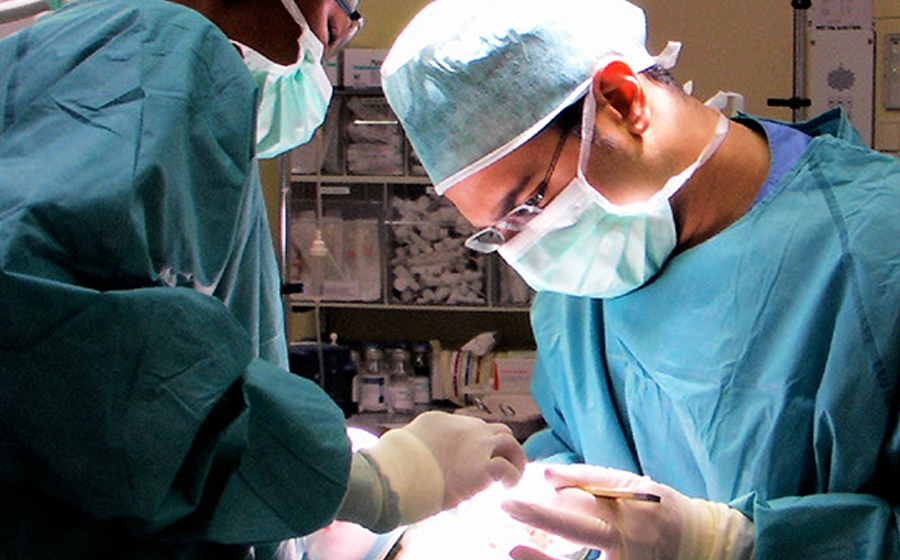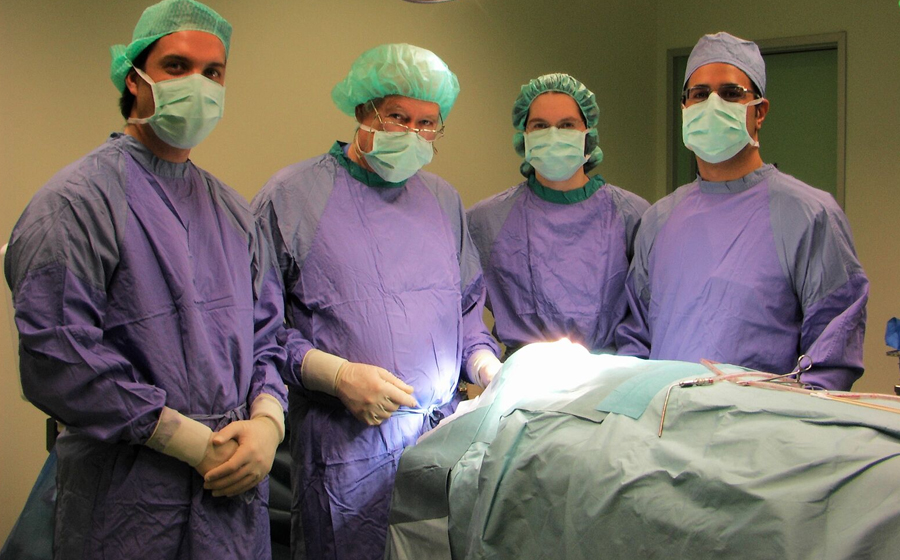Scar Revision
Minimise the Appearance of Scars
Scar tissue is a normal result of the healing process. They can be a result of trauma, prior surgery or injury. Scars are composed of fibrous tissue which is permanent in nature and cannot be removed totally however different types of scars can be improved by using a variety of techniques. The overall goal of improvement is to minimize the appearance of the scar either by disguising it, relocating it, or minimizing its prominence so it is less noticeable. You must realize that it is not ever possible to completely remove all traces of the scar since the body can only heal by forming a new scar. Certain procedures can be used to improve the appearance of scars which include steroid injections, silicone sheeting therapy, dermabrasion and laser treatments. When these techniques are not enough, surgical scar revision is required. The goal of scar revision is to render a scar less conspicuous.
Scar revision and dermabrasion procedures are done either in the office setting or in the outpatient surgery area. Healing generally takes several days and there usually is minimal restriction on activities. On occasion, a scar revision surgery is combined with dermabrasion in a staged fashion to achieve the best results possible. Dermabrasion is an excellent means of providing overall improvement in acne scarring. The scarring cannot be completely removed, but when combined with other minor procedures, dermabrasion can provide excellent smoothing of noticeable acne defects. The acne itself must be quiescent or inactive prior to dermabrasion.
Depending on the type of scar you have, early intervention may or may not be required to prevent a bad scar from forming. Certain scars may improve with time and should be allowed to mature and completely heal prior to initiating surgical treatment. Treatment is usually not instituted until at least six months following an acute injury and in some cases, it is recommended to wait a year or more. Dr Imani will outline all the available options and customise a treatment plan that is best suited for you.
Types of Scars
- Hypertrophic Scar: An excessive amount of scar tissue in an incision or wound characterises this type of scar. The scar itself appears deep red in colour, firmer in texture and raised above the surrounding skin.
- Keloid Scar: This type of scar exhibits similar characteristics to the hypertrophic scar, but has a tendency to continue to grow outside its borders. True keloids occur primarily in darker coloured skin.
Hypertrophic scars and keloids may occur anywhere on the body, but they’re most problematic over the breastbone, on the earlobes and on the shoulders.
Types of Treatments
A. NON SURGICAL TREATMENTS FOR SCARS
Collagen or other Fillers - Often used to treat depressed scars. Fillers have the advantage of blending into the skin, but are not permanent and usually require periodic augmentation.
Steriod Injection - Some scars, particularly the hypertrophic and keloid scars are improved by injection of steroid medication. This medication does not narrow the scar but rather flattens and softens it.
Pressure Therapy - Pressure therapy involves a type of pressure appliance worn over the area of the scar. These may be worn day and night for up to four to six months.
Silicone Gel - When applied to scars, silicone gel sheeting or silicone gel, will soften and help to fade the scar.
B. SURGICAL SCAR REVISION
Scar revision is a procedure designed to reduce the appearance of unsightly scars. The success will depend on certain factors such as the scar’s size, shape, location, patient’s age, skin type and color, and general medical condition. Dr Imani uses the latest techniques to improve scars which include Z-plasty, W-plasty and geometric broken line closures.
Types Of Scar Revisions:
- Elliptical Excision - This is a procedure in which the scar tissue is removed and the wound edges carefully sutured and closed.
- Z-Plasty - In this procedure, the old scar is removed and new incisions are made on each side, creating small triangular flaps of skin. These flaps are rearranged to cover the wound at a different angle, giving the scar a "Z" pattern. This repositions and orients the scar in a more favorable direction within the relaxed skin tension lines of the face. This enables the scar to heal better and dimishes its appearance.
- W-Plasty and Geometric Broken Line Closures - This procedure primarily produces an irregular scar by breaking it up into small geometric patterns that line up and blend in better with the RSTL lines.
- Tissue expanders - Tissue expanders are placed under the skin to expand the amount of existing available skin and tissue surrounding a scar or defect for reconstructive purposes or in very large and wide scars. This procedure tries to avoid using the less-than-optimum skin flap or skin graft procedures.
- Dermabrasion or CO2 Laser -andnbsp; Some scars may be smoothed or "sanded" to blend with surrounding skin through dermabrasion. This sanding or abrasive technique is usually done with a rotary abrasive instrument (such as a Diamond Phrase Burr). Often Dermabrasion is combined with other scar revision techniques to obtain the best final result. In selected cases, the CO2 laser is used as a simple treatment for less severe scars.
POSTOPERATIVE COURSE:
No matter what approach is taken, keloids and to a lesser extent, hypertrophic scars have a stubborn tendency to recur, (depending on the area) sometimes even larger than before. To discourage this, combined treatments such as steroid injections, topical steroids and sometimes radiation therapy are required. As you heal, keep in mind that no scar can be removed completely. The degree of improvement depends on the size and direction of the scar, the nature and quality of your skin, and how well you care for the wound after surgery.

Anaesthesia: Local or general anaesthesia
In/Outpatient: either in or outpatient, depending on the extent of the surgery
Length of Surgery: 30 min - 3 hours
Pain Score: minimal
Dressing: one week of dressing, followed by wound care after dressing removal
Recovery and getting back to work: 3-14days off work (bandage reasons, peeling and redness only), full recovery in six weeks.
Duration of Results: Long-term
Any surgical and non invasive procedures carry risks. The decision to undergo surgery or to have non surgical procedures and should not be taken lightly. Individual recovery and outcomes vary amongst patients depending on their genetics, diet and anatomy, and physiology. Results shown are may not be applicable to your individual circumstances. Your results may vary from typical results.
The contents and pictures shown are for educational and information gathering purposes only and do not endorse a particular treatment or procedure.
Before proceeding, you should seek a second opinion from an appropriately qualified surgeon. You should consult your family doctor to obtain a referral prior to consulting a specialist surgeon. The contents of this website does not replace individualised medical advise.
Got a Question?
Thank you for your enquiry!
We will be in contact with you soon.


